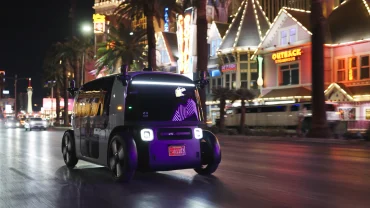
- Mobility Tech
Uber Riders Wait 60% Longer with Forward‑Dispatch Feature
5 minute read

Uber’s forward-dispatch system increases rider costs and wait times while drivers see minimal benefits from the automated booking feature
Key Takeaways
- Forward-dispatch trips increase wait times by 60% and cost riders up to 11% more per mile, contradicting Uber’s efficiency claims according to a Columbia Business School study.
- Trip cancellation rates jump to 8% for forward-dispatch rides compared to just 2% for regular trips, while drivers receive minimal additional compensation for the service.
- Uber’s upfront pricing strategy drives profitability through algorithmic fare optimization, enabling the company to record substantial profits while many drivers earn near minimum wage after expenses.
Introduction
Uber’s forward-dispatch feature promises efficiency for drivers and riders, but new research reveals the opposite outcome for consumers. A Columbia Business School study finds that riders using forward-dispatch trips wait 60% longer and pay up to 11% more per mile than standard rides.
The feature assigns jobs to drivers before they complete current trips, theoretically reducing downtime between rides. However, the analysis exposes significant gaps between Uber’s marketed benefits and actual rider experiences across the platform’s rideshare network.
Key Developments
Professor Len Sherman’s study analyzed data from two experienced Uber drivers, one receiving 60% of rides through forward dispatch and another receiving 40%. The research documented average wait times exceeding 11 minutes for forward-dispatch trips versus approximately seven minutes for regular rides.
The study reveals that Uber does not explicitly inform riders when their trips involve forward dispatch, leaving consumers unaware of the service differences. This lack of transparency means riders cannot opt out of the potentially longer, more expensive trips.
Trip cancellation rates present another concern, reaching 8% for forward-dispatch rides compared to 2% for standard trips. These higher cancellation rates compound the extended wait times documented in Sherman’s analysis.
Market Impact
Uber’s pricing strategies have contributed to the company’s improved financial performance, with fare increases particularly affecting short trips. The upfront pricing model allows Uber to optimize revenue through algorithmic adjustments based on demand patterns and market conditions.
The company has introduced cost-conscious options like Route Share, offering pooled rides at up to 50% less than UberX during peak hours. These initiatives aim to maintain growth amid economic uncertainty while sustaining higher overall fare levels.
Driver earnings remain a persistent challenge, with many drivers earning close to minimum wage after expenses despite Uber’s profitability improvements. This earnings gap highlights the uneven distribution of benefits from the company’s strategic financial maneuvers.
Strategic Insights
Forward-dispatch trips primarily benefit Uber’s operational efficiency rather than drivers or riders, according to Business Insider. The system provides job security for drivers through continuous trip assignments but offers minimal additional compensation for the service.
The feature creates pressure for drivers to make quick decisions mid-route without thorough trip assessment, contributing to operational complexity. This rushed decision-making process may explain the higher cancellation rates observed in forward-dispatch scenarios.
Uber’s shift toward automation and electrification through partnerships with vehicle manufacturers represents a long-term strategy to reduce driver costs. These moves align with industry trends while potentially addressing environmental concerns.
Expert Opinions and Data
Gad Allon from the University of Pennsylvania’s Wharton School supports Sherman’s findings, suggesting forward dispatch may not represent the most profitable strategy for drivers. Allon’s analysis indicates drivers might benefit more by waiting for different opportunities or exploring alternative platforms.
CEO Dara Khosrowshahi has emphasized Uber’s upfront pricing strategy as a method to personalize pricing at scale using advanced algorithms. The system analyzes demand patterns, trip length, and real-time market conditions to optimize fare structures.
Comparative analysis between cities with and without driver pay protections challenges Uber’s narrative about wage standards driving fare increases. Chicago, lacking driver pay protections, experienced more dramatic fare increases than New York City, which maintains pay floors for drivers.
Conclusion
The forward-dispatch study exposes a disconnect between Uber’s marketed efficiency benefits and actual consumer experiences. Riders face longer wait times, higher costs, and increased cancellation rates while remaining largely unaware of the service differences.
Uber’s strategic focus on algorithmic pricing optimization and operational efficiency continues to drive company profitability. However, the uneven distribution of benefits between the platform, drivers, and riders raises ongoing questions about transparency and fair value delivery across the rideshare ecosystem.








